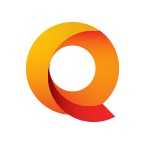June 5, 2017
Smart city and more. These sensors will be useful even in medicine
The importance of Internet of Things (IoT) is increasing. In 2015 McKinsey company estimated the value of this market at already 900$ million.1 Soon there will be not millions, but tens of billions of smart devices connected to the Internet.2 Ericsson company predicts, that in 2020 their number can reach 26 billions.3
What actually is IoT? The term refers to the world of devices that are connected to the Internet, but, unlike computers or smartphones, are not “typically” designed for this purpose.4 This includes, i.a., wearables, that help us to measure our physical achievements, telemedical devices, which control patients’ condition and also specialised sensors, which are used for monitoring manufacturing processes. Therefore, the world of IoT consists not only of the devices that we interact with directly (as their users), but also of sensors designed to gather data from the environment and of systems that process this information.
A sensor platform?
IoT development works are being conducted all over the world. Our company - EMBIQ - aims at creating an innovative solution in this field. The project is about creating a sensor platform with unique detectors - specialised for gathering lots of different information and capable of working even under very difficult conditions.
- For this purpose we’ll use integrated optoelectronic sensors and MEMS. Among the optoelectronic ones, there will be fiber Bragg grating sensors - explains Ph.D. Eng Wojciech Surtel the Head of R&D in this project and also a scientist from Lublin University of Technology.
This means that the platform will be equipped in, for example, pH sensors that have many different applications. They can be used even in medicine. Moreover, we’ll be further developing our existing smart city products: OCKO (a system designed for measuring human flow and analysing behaviour) and BLOKO (an appless solution for monitoring equipment and people). Special sensors are used in both of them.
All those features of the platform, create a broad range of possible applications.
Medicine: running tests, avoiding a scalpel
Sensors that indicate acidity or alkalinity (pH) can be used, for example, in delivery rooms. In certain cases, there’s a need to measure pH of a child’s blood during labor. It allows to determine if there are any complications and decide whether or not a C-section is necessary. To take a sample of blood a small cut is being made on the child’s head, but with pH sensors, that would no longer be happening. These devices will be able to take measurements without any incisions.
Agriculture: fertilising only when necessary
Another possible application is checking the condition of soil. A fiber-optic sensor can be placed directly into the ground, on a certain depth, and the data can be accessed remotely with a special device. - This sensor has to be intelligent. It means, that it needs to have an electronic system, which will both measure pH and transmit data by using modern, wireless communication interfaces. Moreover, thanks to some energy-efficient solutions, a sensor of this kind will be able to work for a very long time on batteries, backed up with a photovoltaic power supply - says Ph.D. Eng Wojciech Surtel.
Soil’s pH level is very important. It influences the growth of plants and, as a result, the size of crops. Too high acidity level is unfavourable for agricultural production, so calcium fertilizers are being applied to adjust it. Intelligent pH sensors can help to make sure, that those fertilizers are used only when it’s truly necessary.
Cities: both intelligent and efficient
Other sensors - that monitor the movement of people and things - can be installed in so called intelligent homes or can help to manage public space properly. The OCKO system, that will be further developed while creating the sensor platform, already allows to measure human flow in almost any given area. It’s not hard to imagine, how it could help in operating public transport and in adjusting schedules to actual needs. Additionally, BLOKO (which is based on devices with BLE interface) can help in tracking the movement of vehicles and equipment.
- Intelligent systems and the sensors, that are their integral part, can be almost unnoticeable and yet they are capable of “keeping an eye” on a very large part of our environment - says Tomasz Niedzialek, the CEO of EMBIQ company. - Thanks to them, cities can use their assets more effectively or take care of safety issues in an improved way. In the future, it’ll be hard to imagine life without those solutions; just as nowadays we find it hard to remember how we got along without the Internet.
Our project, entitled “Sensor platform to be applied in the Internet of Things”, received over 1 million PLN subsidy from the European Union. The subsidy’s value reached exactly 1 173 449,20 PLN and the overall size of the projects is 1 727 180 PLN.
1Louis Columbus, Roundup Of Internet Of Things Forecasts And Market Estimates, 2016, "Forbes", 27.11.2016 [https://www.forbes.com/sites/louiscolumbus/2016/11/27/roundup-of-internet-of-things-forecasts-and-market-estimates-2016/#6f29f795292d]
2Chris Neiger, These Jaw-Dropping Facts Will Change Your Mind About the Internet of Things, "The Motley Fool", 5.05.2017 [https://www.fool.com/investing/2017/05/05/these-jaw-dropping-facts-will-change-your-mind-abo.aspx]
3Ericsson and Telia Company report: Connecting the everyday. How the Internet of Things is reshaping our World, 2016 [https://www.ericsson.com/assets/local/news/2016/11/iot-for-dummies-20161019.pdf]
4Andrew Meola, What is the Internet of Things (IoT)?, "Business Insider", 19.12.2016 [http://www.businessinsider.com/what-is-the-internet-of-things-definition-2016-8?IR=T]
Quote a project! Get advice.
Let’s investigate your project concept and its current status together.
Expect an initial project scope proposal, time and cost estimation from us.
The consultancy will be protected by the NDA.
